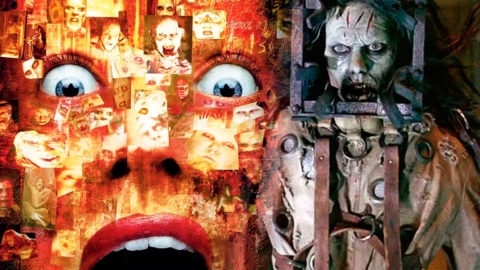Genre: Erotic Drama | Psychological Art-House | Surreal Classic
Belle de Jour (1967) is one of cinema’s most tantalizing, enigmatic explorations of desire and repression—a masterwork by the legendary Spanish director Luis Buñuel that sits comfortably among the crown jewels of surrealist film. Over fifty years later, it still seduces audiences with its elegant mix of erotic fantasy and razor-sharp social satire.
At its center is Séverine Serizy, played with icy allure by Catherine Deneuve in one of her defining roles. By all appearances, Séverine is the perfect bourgeois Parisian housewife—young, beautiful, and married to the handsome, devoted doctor Pierre (Jean Sorel). But beneath her porcelain exterior lies a restless hunger for something darker, something forbidden that her proper domestic life can’t satisfy.
Drawn by curiosity and a simmering discontent she barely understands, Séverine begins living a double life. By day, while her husband works, she secretly becomes Belle de Jour—a prostitute at a high-class Parisian brothel, indulging fantasies she could never confess at home. There, she drifts between clients and surreal encounters, each visit blurring the line between reality and her own increasingly vivid daydreams.
Buñuel, the master of sly surrealism, doesn’t offer easy answers or moral lessons. Instead, he dissects middle-class respectability with cold precision, layering Séverine’s polite life with flashes of bizarre dreams—coaches in forests, sadomasochistic visions, inexplicable memories—that suggest her desires are far more complex than society can contain. The film’s most famous moments—Séverine’s stoic beauty paired with her hidden depths of lust and shame—remain haunting and hypnotic.
Catherine Deneuve’s performance is iconic for good reason. She embodies the contradiction at the film’s core: a woman both frigid and burning with secret passion, passive yet fiercely in control of her own secret life. Her placid face hides storms of longing, and every stolen glance hints at the psychological labyrinth she drifts through behind her polite smile.
Visually, Belle de Jour is a cool, elegant dream—Paris is filmed as a city of immaculate rooms and polite façades, behind which desire festers like a secret garden. Buñuel’s surreal flourishes—fleeting, unsettling, often darkly funny—make the film a riddle that invites endless interpretation. Is Séverine liberated or trapped? Fantasist or victim? Buñuel doesn’t say. He simply shows us how fantasy and reality bleed together in the human mind.
Decades later, Belle de Jour remains a landmark of erotic cinema and feminist film discourse. It’s a story about a woman claiming her own fantasies on her own terms—no matter how taboo, no matter how contradictory. Daring, elegant, and deliciously ambiguous, it lingers in the mind like a half-remembered dream, as mysterious and provocative as the woman at its center.







